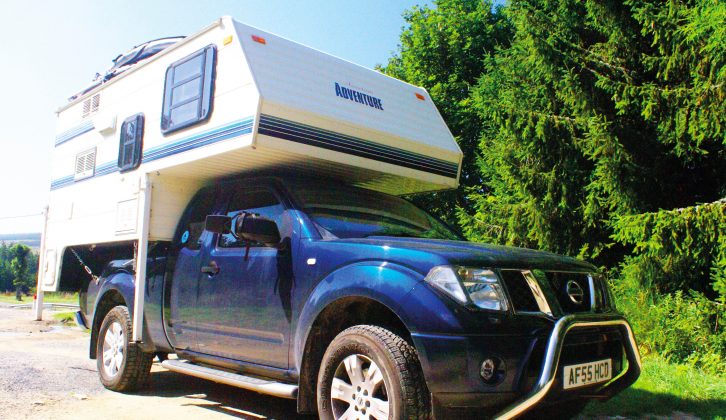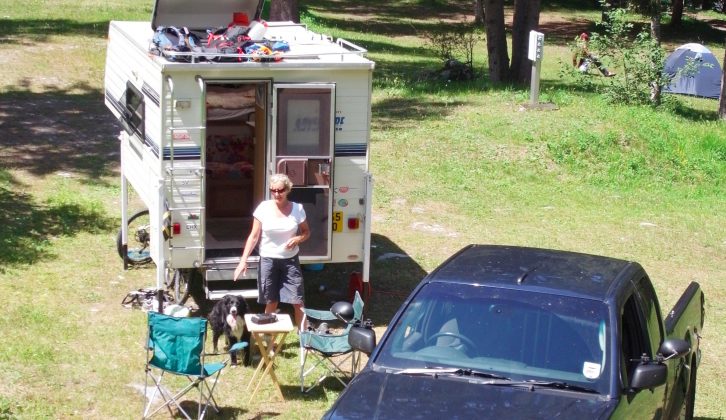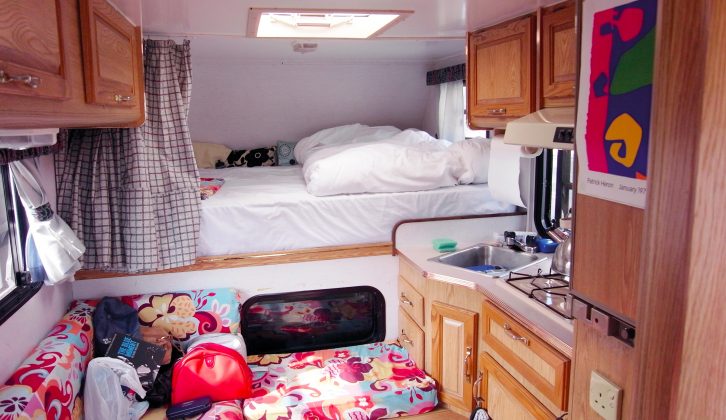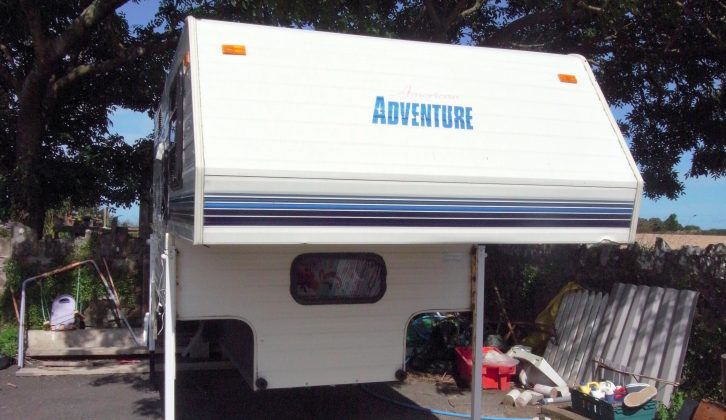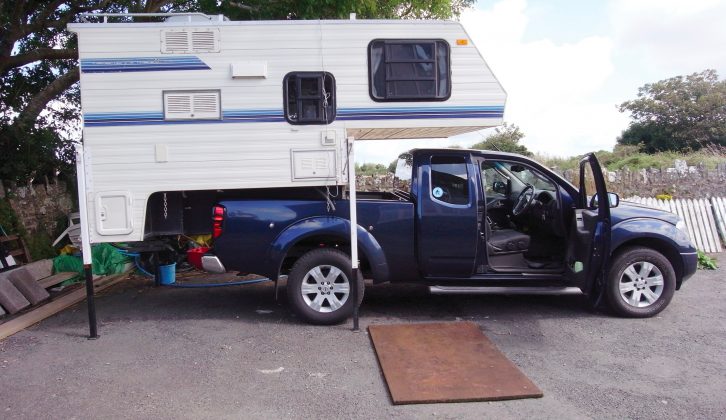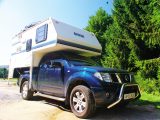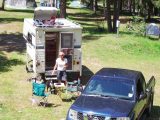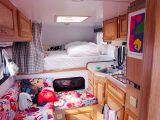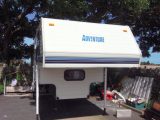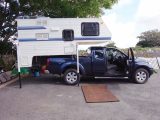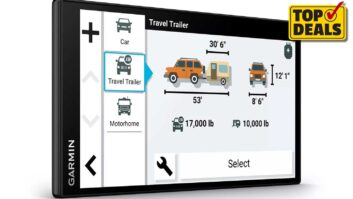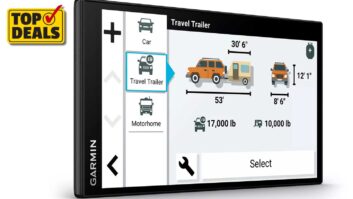Numerous trips to the USA had introduced me to demountables – campers on retractable legs that sit in the bed of a pick-up truck, and that can be loaded on and off with relative ease.
It struck me that this was the perfect compromise between a car and a motorhome, because it meant that the pick-up could be used as a regular car when it wasn’t transporting the camper.
In addition, it gave me a four-wheel-drive option, which has been great for wild camping literally off the beaten track.
And storing the camper for the 40-odd weeks of the year when it’s not in use is relatively easy, because it takes up less space than a regular motorhome.
The best of all worlds?
So it was that I ended up with an American North Star demountable that is now approaching veteran status, dating as it does from 1997.
It sits atop a Nissan Navara crew cab, and has a double bed over the cab, a sink, a three-ring cooker, a fridge/freezer, a cassette toilet, and seating and a table that can be converted to a single bed.
Water storage capacity is 15 gallons, there’s a blown-air heater and the leisure battery is kept topped up with a solar panel that I’ve installed on the roof.
There’s plenty of storage inside the camper, as well as a large roof box and roof racks for surfboards and bikes.
Preparing your pick-up
Once you buy your pick-up you must be prepared to savage the bodywork. You’ll need to have two stainless-steel ‘studs’ bolted to each side, which will be used for lashing the demountable in place with chains when you’ve loaded it.
It’s also worth installing hydraulic ‘airbags’ on the rear suspension.
These are inflated when the demountable is loaded to prevent its weight making the rear of the truck sag. This would severely affect its handling, and result in your headlights illuminating the underside of clouds.
How it works
Mounting the demountable camper takes around 20 minutes once you have the process sussed.
It involves removing the tailgate from the camper, winding up the legs, pumping up the air suspension then reversing under the camper.
You then need to wind down the legs so the camper sits centrally in the truck bed, lash it securely, connect the electrics and hit the road.
Any problems?
The major maintenance issues I’ve had have been with the roof and the retractable legs.
The roof developed a leak that was virtually impossible to locate. I eventually replaced the whole roof to ensure no further problems.
As for the legs, these were originally operated by an electric motor, but over time – and probably because I live in the salt-laden atmosphere of the Pembrokeshire coast – first the motors and then the winding mechanisms seized up so much that I had to replace them.
I didn’t bother putting motors on because they hadn’t proved very reliable. In fact, it’s just as quick to wind the legs up and down by hand.
Later this year it will be my demountable’s 20th birthday. She’s not doing bad for an old girl!
Expenses
Running costs over the years that I’ve owned the camper (other than regular maintenance, such as replacing the battery) have been as follows:
- New roof – £2000;
- Replacement legs, minus electric motors – £850;
- Solar panel – £80.
The four-wheel-drive option has been great for wild camping – and a demountable is easy to store
